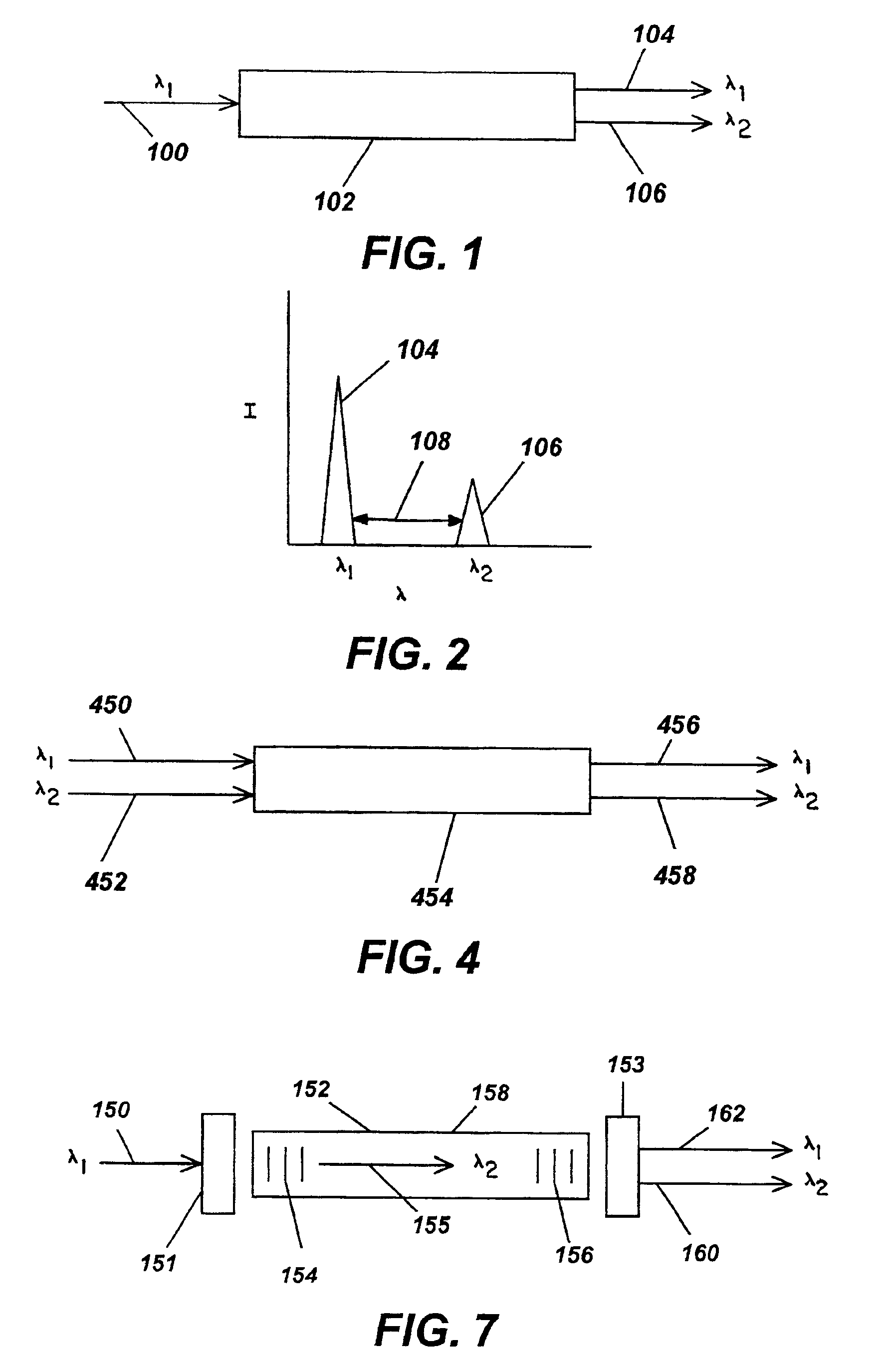Amplification with chalcogenide glass fiber
a technology of chalcogenide glass fiber and chalcogenide glass fiber, which is applied in the direction of instruments, optical elements, active medium materials, etc., can solve the problems of unreliability, large volume and technical complexity of lasers, and inability to meet the optical transmission window of silica glass fiber, etc., and achieves the effect of small volume, high efficiency and compact structur
- Summary
- Abstract
- Description
- Claims
- Application Information
AI Technical Summary
Benefits of technology
Problems solved by technology
Method used
Image
Examples
example 1
[0039]To demonstrate the Raman fiber amplifier and laser invention herein, Raman amplifier was fabricated operating at 1.56 μm in order to measure the Raman gain coefficient. FIG. 8 shows the experimental setup for the experiment.
[0040]The device included a 1 meter section of As—Se fiber 210 with about 7 μm core and 100 μm cladding having NA of 0.45. The fiber loss was about 0.7 dB / m at 1.5 μm. The fiber was not single mode at 1.5 μm but was multimode since it could support up to nine modes. The device was pumped with Continuum Mirage OPO 212 at 1.56 μm with about 8 W of peak power in a 5 ns pulse. The signal source 214 was a 1.56 μm diode laser that was mixed with the pump laser using a 2×2 coupler 216. The amplified 1.56 μm signal was spectrally separated from the pump by a Jarrel-Ash ¼ meter monochromator 218 and detected with an InGaAs detector 220. The results are generally shown in FIG. 5. The unamplified diode laser signal without the pump was approximately 40 μV, which was a...
example 2
[0041]The demonstration of a fiber Raman amplifier of Ex. 1 shows the viability of the device. It has also been demonstrated that the device can operate farther into the IR by recording Raman signal at 1.91 μm under 1.83 μm pump and at 6.2 μm under 5.4 μm pump.
PUM
 Login to View More
Login to View More Abstract
Description
Claims
Application Information
 Login to View More
Login to View More - R&D
- Intellectual Property
- Life Sciences
- Materials
- Tech Scout
- Unparalleled Data Quality
- Higher Quality Content
- 60% Fewer Hallucinations
Browse by: Latest US Patents, China's latest patents, Technical Efficacy Thesaurus, Application Domain, Technology Topic, Popular Technical Reports.
© 2025 PatSnap. All rights reserved.Legal|Privacy policy|Modern Slavery Act Transparency Statement|Sitemap|About US| Contact US: help@patsnap.com



